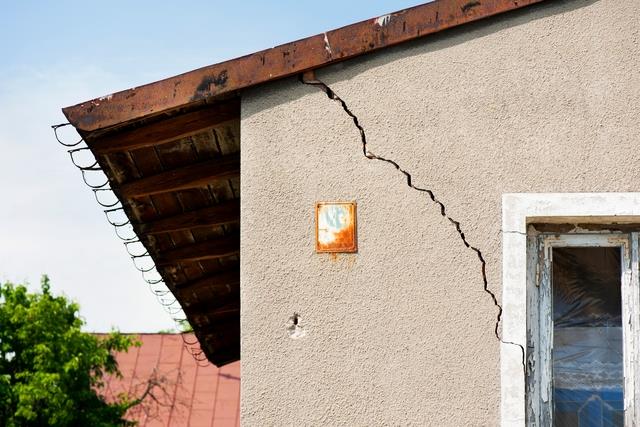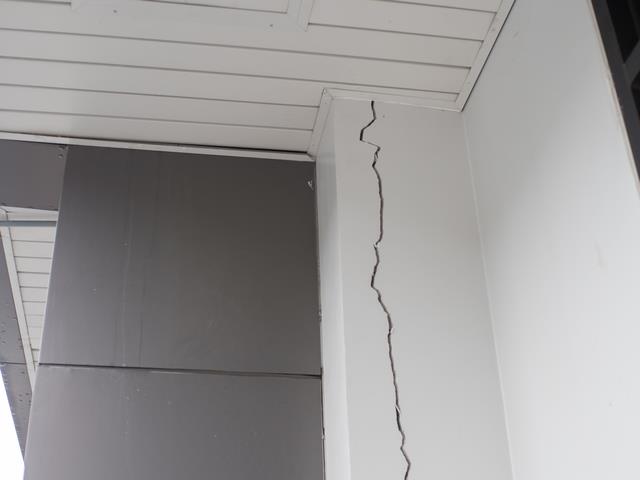Nowadays, a substantial number of buildings are collapsing. Sadly, a majority of cases are due to bad foundations. So, it’s crucial that you watch out for the signs as most problems are repairable. The fact is that a building foundation doesn’t just develop a problem - there must be an underlying cause.

According to a professional foundation repair, here are 7 common signs of a bad foundation that you must be aware of:
1. Cracks in your foundation

Cracks are never a good sign when they are on a foundation - they are usually an indicator of a major problem. Accordingly, cracks in a foundation should be fixed immediately, regardless of size. You need to watch out for this sign as it may lead to the sinking of your building. In most cases, foundation cracks are associated with unstable soils.
When the soil is loose, water weakens the foundation. Some foundation cracks extend to other parts of the building such as the walls, floors and chimneys. If any of these parts have cracks that you can’t explain, it could be related to the foundation.
2. Tilting chimney

Don’t let your tilting chimney fool you into assuming it’s an optical illusion - it’s not. It may have something to do with a bad foundation. The chimney may look like its bowing to one side or there may be an unusually large gap between it and your building. Remember, most chimneys are built on a foundation that’s separate from that of a building.
Reasons to explain a tilting chimney include:
- Poorly drained foundation soil
- Loose soil
- Shallow footing
You need to talk to an expert to have the extra chimney weight supported. This will help correct the tilting.
3. Water damage

When there are cracks on your foundation, there’s always a chance of water damage. It happens when water intrudes your foundation, resulting in signs like:
- Water stains
- Mould
- Stench
- Flooding
- Rotting
Once you identify the above signs, you should act fast to ensure that the water damage doesn’t become extensive.
4. Sinking foundation

A sinking foundation is a threat to the life of your building and its occupants. It can be identified by the following signs:
- Exterior cracks on the building walls
- Bowing walls
- Spaces around the exterior of your windows/doors
The foundation can start sinking if the soil layer below is loose. It can also sink if it’s built on uneven ground. It’s advisable to have your building checked by structural experts every once in a while.
5. Sagging floor

It’s quite unusual for a building to have a sagging floor. Time and again, it’s related to the foundation as it holds the floor into position and most floors sag centrally. Other signs you may identify are:
- Jammed doors
- Prominent floor cracks
A sagging floor can be a hazardous occupant of the building as it could easily cause an accidental fall and personal injuries.
6. Difficult to open windows or doors

It’s not normal to struggle to open or close your windows or doors. If it happens and you can’t explain the reason, it may have something to do with the foundation.
It could be related to high humidity or the shrinkage of the foundation soil. Of course, this doesn’t happen overnight.
Such a sign could indicate that your foundation is slowly sinking. If the building is sinking, that is what is causing the frames of your windows or doors to lose their alignment. If they are misaligned, don’t expect your windows or doors to open smoothly.
7. Foundation upheaval

Lastly, a foundation upheaval refers to a situation where the slab of your foundation is thrust upwards. You can identify a foundation upheaval by looking at the floor. If it looks to be bowing, then this is a sign of a foundation upheaval.
It can also be identified by sizeable cracks on your floor. There are several structural reasons to explain this:
- Water stagnation and flooding
- Plumbing leakage on the foundation
- Expanding/contracting foundation soils
- Foundation cracks
Finally
To protect your home from collapsing, you have to watch out for the above signs so that you can address them early enough. But since foundation repair is something technical, you may find it necessary to talk to an expert.
Article courtesy of www.home-dzine.co.za









